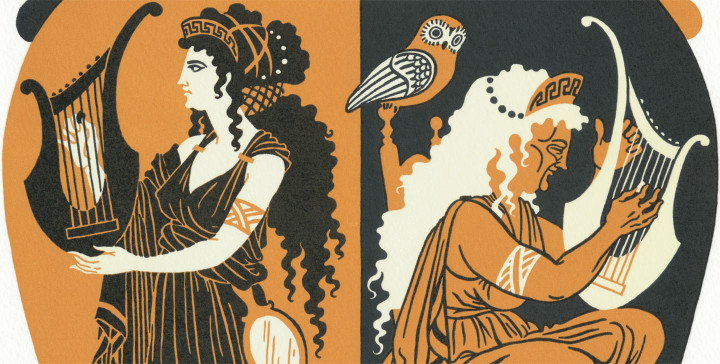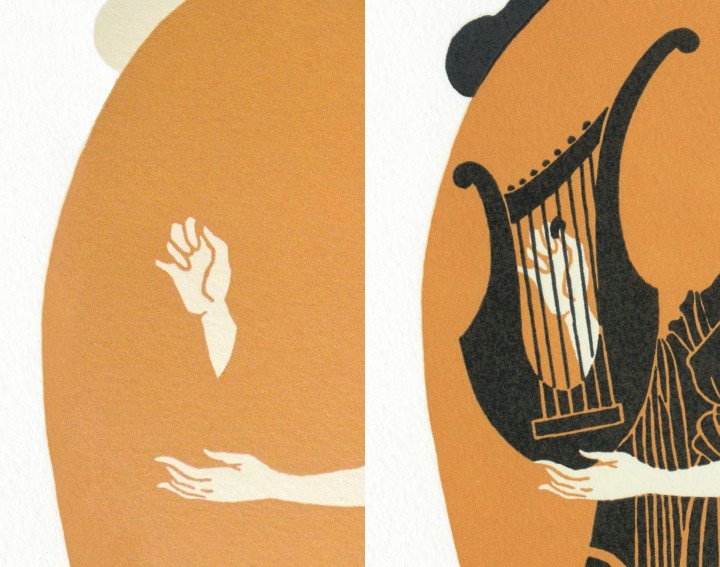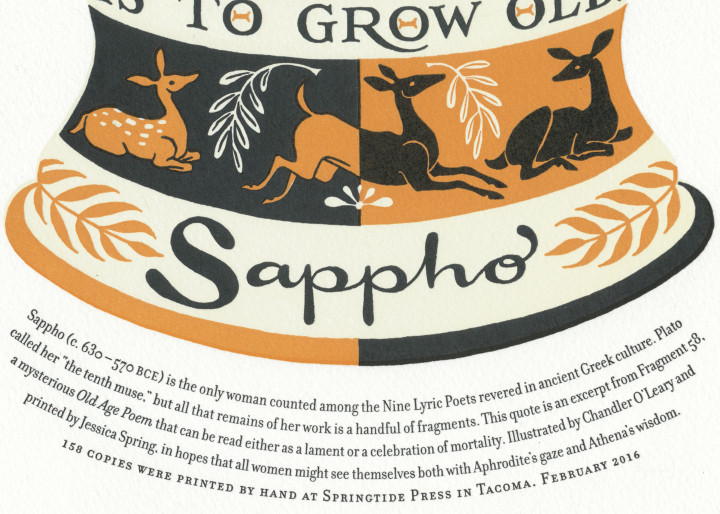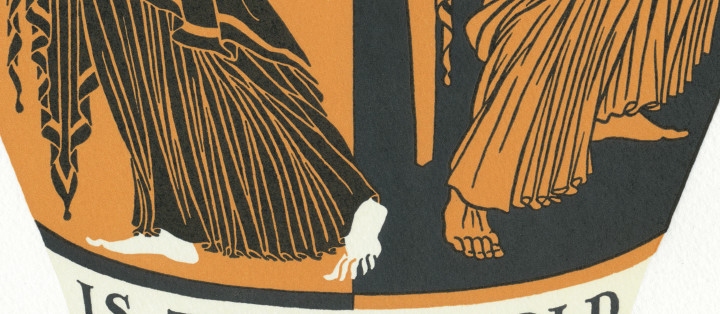Age Before Beauty

When it came time for us to find our next Dead Feminist, our thoughts turned to our own mirrors. Like every woman in our pop-culture-driven world, Jessica and I are bombarded with imagery and messages that urge us to scrutinize and criticize our own appearance. Unsurprisingly, we are taught to find ourselves lacking in one way or many, and to compare ourselves with an impossible ideal.
We were a little surprised to find courage and consolation in Ancient Greece, where they were all about the impossible ideal. Yet if you sift through the lofty architectural theory, stylized scenes and tales of the immortals, you’ll find a honey-tongued poet who speaks the plain truth: Sappho.
To be human is to grow old.
Our 23rd broadside, Age Before Beauty, reaches further back in time than we ever have before—to the 6th century BCE. As you can clearly see, the illustration is styled after the designs and motifs of ancient Greek pottery, right down to the amphora handles.
Yet even though she lived and worked thousands of years ago, Sappho’s words ring true as if they were written yesterday. We especially loved her self-reflection in the poem we chose, and the way she managed to view her aging body with kindness. It brought to mind, for me, an image of dual goddesses who are really two faces of the same woman—like the Maiden and Crone archetypes so common in other pre-Christian cultures.
Like the art of ancient Greece, the illustration is chock full of allegorical imagery. For instance, young Sappho carries Aphrodite’s mirror, while Athena’s wise owl looks over her aged self. Both figures play a seven-stringed lyre: Sappho was a lyrical poet, which means her poetry was designed to be performed to music. (Incidentally, some scholars also credit Sappho with the invention of the plectrum, a tool similar to a guitar pick that was used to pluck the lyre’s strings.) Finally, the band of dancing deer at the base references Josephine Balmer’s recent translation of Sappho’s Old Age Poem.
Compared to our previous broadsides, the composition and color scheme of this piece are fairly simple. The printing, on the other hand, was not. All those curves made it hard to line up the plates, and we had huge floods of color paired with delicate lines and text. To help her with the ink coverage and add just a tiny bit more pop to the color, Jessica ran the vase shape in a run of subtle cream first.
The cream pass helped with the super-tricky registration of the black and terracotta, as well.
All that fiddly and difficult technical stuff made the finished product that much sweeter. We’re pleased as punch about the results—we hope you will be, too.
To help all women and girls see themselves in a more positive light, we are donating a portion of our proceeds to About Face. Founded in 1995, About Face works to improve girls’ and women’s self-esteem and body image by helping them understand and resist harmful media messages.
• • • • • • • • • • • • • • • • • • • • • • • • • • • • • • • • • • • • • • • • • • • • • • • • • • • • • • • • • • • •
Age Before Beauty: No. 23 in the Dead Feminists series
Edition size: 158 prints
Poster size: 10 x 18 inches
Printed on an antique Vandercook Universal One press, on archival, 100% rag (cotton) paper. Each piece is numbered and signed by both artists.
Colophon reads:
Sappho (c. 630 – 570 BCE) is the only woman counted among the Nine Lyric Poets revered in ancient Greek culture. Plato called her “the tenth muse,” but all that remains of her work is a handful of fragments. This quote is an excerpt from Fragment 58, a mysterious Old Age Poem that can be read either as a lament or a celebration of mortality. Illustrated by Chandler O’Leary and printed by Jessica Spring, in hopes that all women might see themselves both with Aphrodite’s gaze and Athena’s wisdom.
Now available in our Dead Feminists web shop!
![Chandler O'Leary [logo]](https://chandleroleary.com/wp-content/themes/chandleroleary/images/logo.png)





